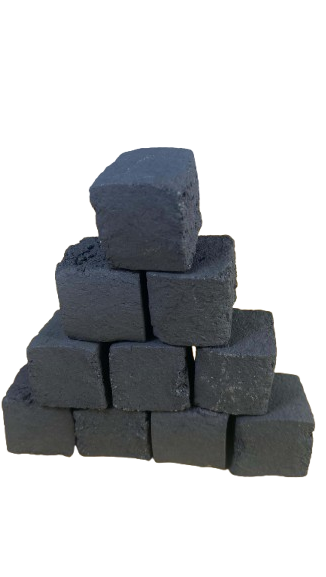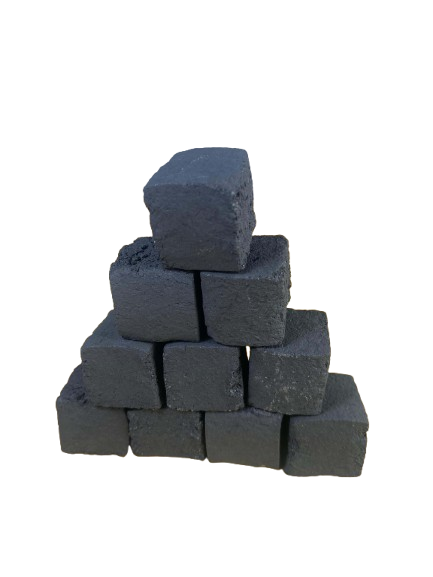hookah-shisha.com – Charcoal briquettes exploring eco-friendly have emerged as an innovation in the energy sector. These briquettes, derived from renewable resources, are designed to provide an efficient, clean, and sustainable alternative to traditional charcoal. In this comprehensive guide, we will explore the benefits, production process, applications, and global market trends of eco-friendly charcoal briquettes.
What Are Eco-Friendly Charcoal Briquettes?

Eco-friendly charcoal briquettes are a type of fuel made from organic waste such as coconut shells, sawdust, rice husks, or agricultural residues. Unlike traditional charcoal, which is often produced from wood that contributes to deforestation, these briquettes are made from byproducts that would otherwise be considered waste, making them an environmentally friendly choice.
Read More : Industrial-grade Briquettes for Efficient Energy
Key Characteristics:
- Sustainability: Made from renewable and recycled materials.
- Low Emissions: Produces less smoke and carbon dioxide compared to conventional charcoal.
- High Energy Efficiency: Provides consistent and long-lasting heat output.
- Cost-Effective: Utilizes materials that are often abundant and inexpensive.
Benefits of Using Eco-Friendly Charcoal Briquettes
1. Environmental Protection
The production and use of eco-friendly briquettes significantly reduce reliance on wood, thereby curbing deforestation. Additionally, their low emission levels help minimize air pollution and contribute to reducing greenhouse gases.
2. Economic Benefits
- Job Creation: Briquettes production involves local communities and small industries, enhancing employment opportunities.
- Waste Management: Utilizes agricultural and industrial waste, reducing landfill burdens and promoting recycling.
3. Health Advantages
Traditional charcoal and firewood generate large amounts of smoke, which can cause respiratory issues. However, eco-friendly briquettes burn cleaner, ensuring safer indoor air quality.
4. Energy Efficiency
Eco-friendly briquettes have higher calorific value and longer burning times, making them a more efficient energy source for cooking, heating, and industrial applications.
How Are Eco-Friendly Charcoal Briquettes Made?
The production process involves several key steps, which may vary depending on raw materials and technology used:
- Raw Material Collection Materials like coconut shells, sawdust, or rice husks are collected. These are often byproducts of other industries.
- Carbonization The raw materials are burned in controlled conditions in kilns or specialized carbonization equipment to turn them into charcoal.
- Grinding and Mixing The charcoal is ground into fine powder and mixed with binders such as starch or molasses to create a uniform consistency.
- Briquettes Formation The mixture is compressed into desired shapes, such as cylinders or pillows, using briquettes press machines.
- Drying The briquettes are dried under the sun or using industrial dryers to remove moisture and ensure durability.
Applications of Eco-Friendly Charcoal Briquettes
1. Domestic Use
Eco-friendly briquettes are popular for cooking and home heating, especially in areas where traditional fuels are scarce or expensive.
2. Industrial Applications
Industries use briquettes to heat boilers, kilns, and furnaces due to their high energy efficiency and consistent heat output.
3. Recreational Activities
Briquettes are widely used for outdoor grilling and barbecues, as they provide steady, smoke-free combustion.
4. Agricultural Use
Some briquettes are formulated with added nutrients and used as soil conditioners to enhance crop yields.
Global Market Trends
The demand for eco-friendly charcoal briquettes is growing rapidly, driven by increased environmental awareness and the need for sustainable energy solutions.
1. Key Markets
- Middle East: High demand for shisha and barbecue briquettes.
- Europe: Consumers prioritize eco-friendly and carbon-neutral products.
- Asia: Rapid industrialization and urbanization drive the need for sustainable alternative fuels.
2. Market Drivers
- Stricter environmental regulations.
- Rising energy costs, encouraging a shift to alternative fuels.
- Technological advancements in briquettes production.
3. Challenges
- Competition with traditional fuels in terms of cost and accessibility.
- Limited awareness in some regions about the benefits of eco-friendly briquettes.
Choosing the Right Briquettes
When selecting eco-friendly charcoal briquettes, consider the following factors:
- Material Source: Ensure the briquettes are made from sustainable and renewable raw materials.
- Quality Certification: Look for certifications that verify the product’s environmental and safety standards.
- Performance: Choose briquettes with high calorific value, low ash content, and consistent burning time.
Conclusion
Eco-friendly charcoal briquettes are a practical and sustainable solution to meet the world’s energy needs. By choosing this innovative alternative, individuals and industries can contribute to environmental preservation while enjoying efficient and cost-effective energy. With rising global demand, eco-friendly briquettes represent a promising step towards a greener and cleaner future.

